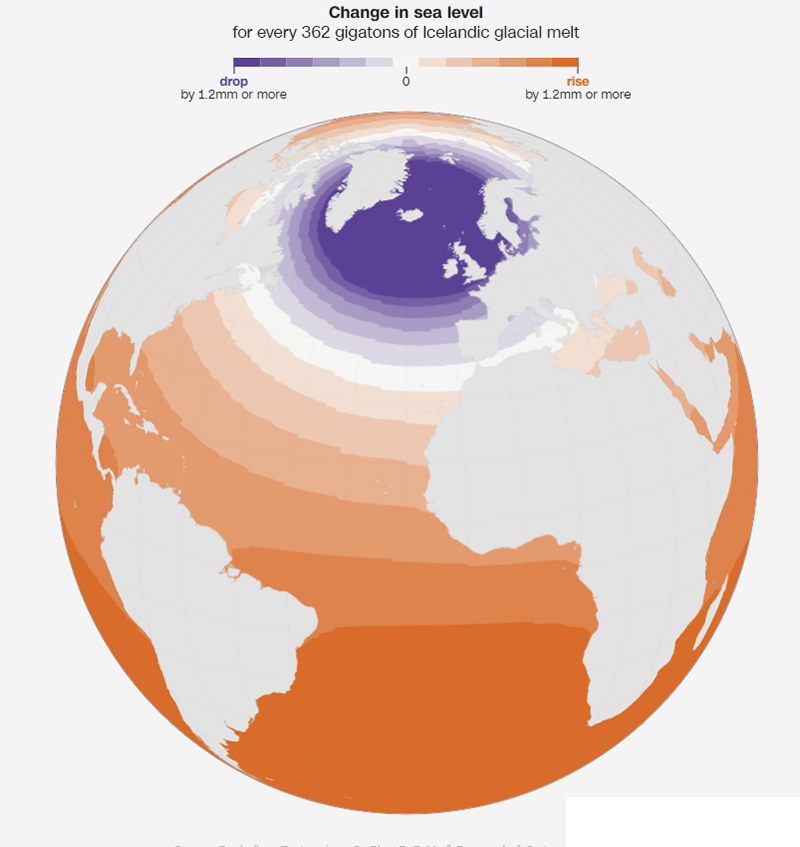UNFORSEEN CONSEQUENCES: Changes due to massive glacier melt are surprising
One of the most dangerous and visible effects of global heating is that sea levels are rising almost everywhere around the planet. Coastal areas such as the US Eastern Seaboard, Louisiana, Alaska, China, Bangladesh, Vietnam, Indonesia, Thailand, the Philippines and Japan are already becoming inundated by salt water, while Pacific Islands such as the Maldives and the Marshall Islands are facing existential choices.
Globally, average sea level has risen by more than a foot (20cm) since 1900, and the rate of rise has accelerated since 1990.
In general, seas are rising because the land ice on Antarctica, Greenland and other huge ice caps is melting faster than ever, and the trillions of tons of water locked up in the ice gushes into the oceans. The coastal ice shelves that have slowed the flow to the sea are collapsing. This is simple. Less obvious is the other major cause of sea level rise, which is that the volume of the global ocean is expanding as the waters warm. Just basic physics.
But (along with such phenomena as methane craters blowing holes in the thawing permafrost) there are unexpected developments that one might call counter intuitive.
In Iceland, coastal water levels are dropping even as melting land glaciers dump tons of fresh water into the North Atlantic each day. That is because as the immense weight of Iceland’s glacial ice mass disappears into the North Atlantic, the land beneath it is “bouncing back”, more or less springing up as the burden is removed. So seas seem to be dropping lower on the coasts of Iceland even though water level is relative to the land mass.
But this is more than just another entry in global warming fun facts. In terms of practical effects, the shallower bays and estuaries are becoming more treacherous to navigate for fishing vessels. While rising coastal waters can be contained to some degree by human infrastructure, there is no remedy for this scenario.
No one is winning in this tug of war.

CURRENT CLIMATE SHOCKS 2022
LINK TO THESE STORIES AND MORE
- New American Climate Refugees As Waters Close In On Louisiana Communities
- South Africa: Over 400 dead in “unprecedented” flooding
- NOAA Report indicates methane feedback cycle may be irreversible
- Idaho faces another year of critical water shortages
- Gulf Stream / AMOC continues to slow
- ANOTHER ANTARCTIC ICE SHELF COLLAPSES
.
Recent Climate Posts:
Snow crab is one of many marine food species that is not going to make the long haul: Read article here.
Interesting and alarming developments across the Arctic as permafrost melts and more greenhouse gases spew into the atmosphere. Read article here.
.